The Truth About Marine Hoses

Having the right hose for the right job is probably more important than most of us realize. The last thing on your mind is the thought of your boat sinking and yet the many and various types of hoses fitted in and around pleasureboats are common causes of such disasters.
Recently I was summoned to determine why a friend’s boat’s bilge pump kept cutting out. We had left the marina, traveled for an hour and were peacefully at anchor. There was no doubt that salt water was entering the boat somewhere because the automatic kept turning on at regular intervals. Panic immediately set in and we ripped up the various cockpit hatches, salon carpets and engine-hatch covers. There was quite a bit of water in the bilge, mixed with a little diesel that was leaking from the main supply to the diesel filter.
The front pulley of the engine had successfully flung this mess to every corner of the engine room. We pulled up more carpet from the forward section of the boat and eventually found the leak. The boat had a toilet with the aid of an electric high-pressure pump. The PVC reinforced hose connecting the pump to the toilet had parted company, allowing the pump to continuously pump water into the boat. Had this been in the marina undetected, the batteries would eventually have run flat, the automatic bilge pump would no longer have worked, and a sinking would have been inevitable.
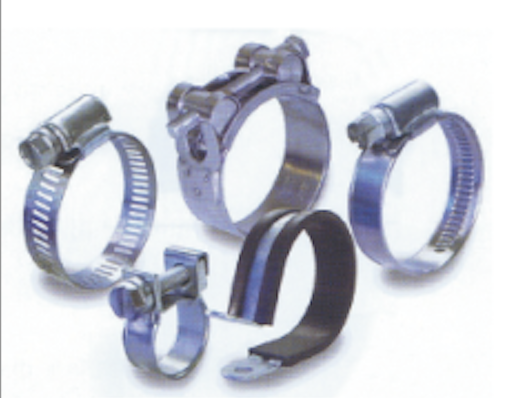
Learn the Differences
There are many hoses in a given boat and they are all specified for an application. The correct hose to use on the toilet system is not the same as that needed for the exhaust, and fuel hose should never be used for the coolant system. You get the point
Don’t install automotive hoses in your boat either. It may fit, but the chances of its lasting may be slim. Appropriate hoses are essential to keeping your boat systems working correctly and they help keep the boat afloat. There is no substitute for quality hose and anything less is asking for trouble.
Let’s take a look at marine hoses and their different uses:
Sanitation and Heads
There are two basic types of hose available for this application — PVC and rubber.
PVC is relatively cheap, flexible and easier to install, but poor-quality PVC hose can go hard and brittle, leaving it virtually impossible to remove without destroying the hose. If it hardens, it is difficult to prevent leaks. Often the suction or water supply hose for the toilet is required to be about ½” (12 mm) or .63” (16 mm) inside diameter (ID), but the confined location of the toilet is such that a flexible hose is required. A word of warning: never use clear PVC hose. This can emit the smell of rotten eggs when you first flush the toilet, because the clear hose allows light to assist the growth of bacteria in the stagnant water
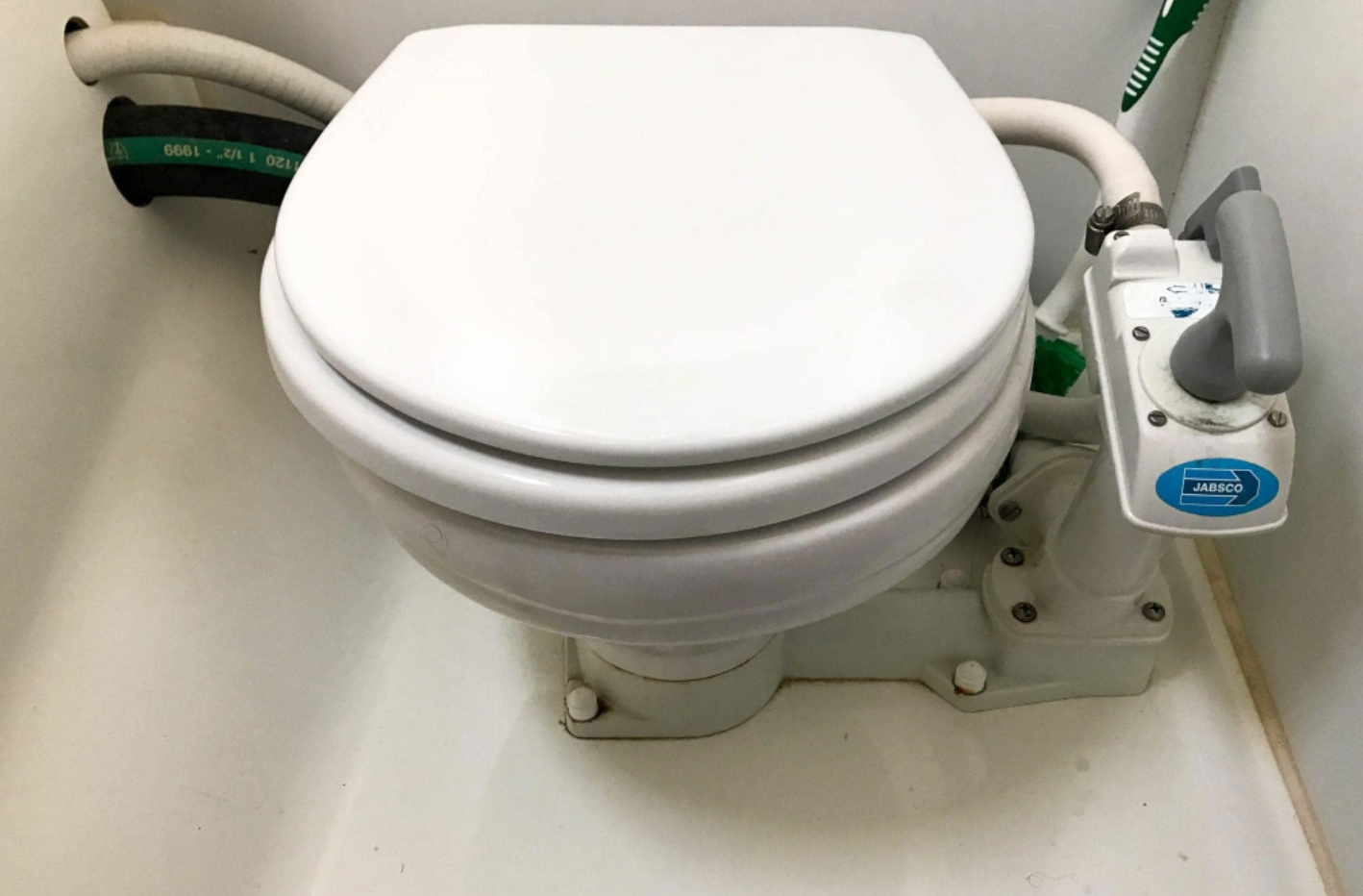
Rubber hose, on the other hand, is more expensive, stiffer and more reliable. When installing sanitation hoses, avoid creating low spots that will retain effluent. The use of double hose clips is recommended on all hoses below the water line. For tight situations, rubber hose can be obtained with a wire reinforcement to prevent hose collapse. Premium smooth-tube hose designed for open water discharge applications is ideal because this will minimize clogging.
When choosing sanitation hoses, be aware that in time the inside of the hose will eventually be constricted by calcium deposits if flushing with saltwater.
In your regular maintenance checks, don’t forget the loop vent.
Fresh Water Hoses
There are not many choices in this area. The hose must be non-toxic and non-tainting. Plastic water piping manufactured for domestic plumbing. These products are generally opaque and are combined with opaque water tanks so no light gets into the system. Water will stay clean and drinkable almost indefinitely. Again, avoid clear PVC hose should be avoided because of possible bacteria growth. A filter is recommended and stay and never use garden hose.
LPG Hoses
The minimum amount of approved flexible hose should be used in any LPG system. Copper pipe is commonly used with swaged or crimped flexible hoses attached but be aware that copper pipe deteriorates too. Hose clamps are unacceptable for LPG.
Every appliance should be served by a continuous fuel line with no joints or connections. Connections or tees must be made inside the gas bottle locker that is designed to American Boat & Yacht Council (ABYC) and other industry standards, and will be sealed and vented overboard. This will keep gas leaks out of the boat.
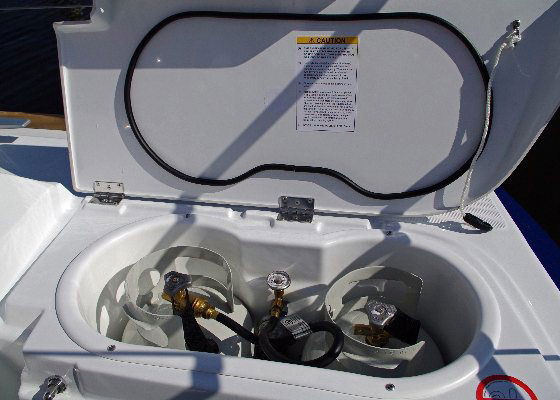
Fuel Hoses
Fuel fill and fuel line hoses are specialized. PVC should be avoided in any fuel situation, especially where gasoline is concerned. It’s important to use a premium grade of rubber hose. On gasoline-burning engines, because of high ambient temperatures, use SAE 30R7 at the minimum, or if you can find it, SAE 30R9.
Diesel fuel hoses are often overlooked as diesel is not considered as dangerous, but a leak still causes a terrible mess. Engine manufacturers such as Detroit, Cummins, etc. all use SAE 100R5 type hose (fabric external cover) for oil and fuel lines. This hose has a wire braid as a reinforcement and has a special range of reusable or crimped couplings matched to the hose. The result is a robust fuel or oil hose that withstands someone climbing around the engine room, often in poor light or access. An important fact to consider in diesel supply lines is that the hose and couplings are air tight to prevent air getting into the diesel pump and injectors. Fuel vent hoses should be of an equal quality and large enough to vent adequately when refuelling.
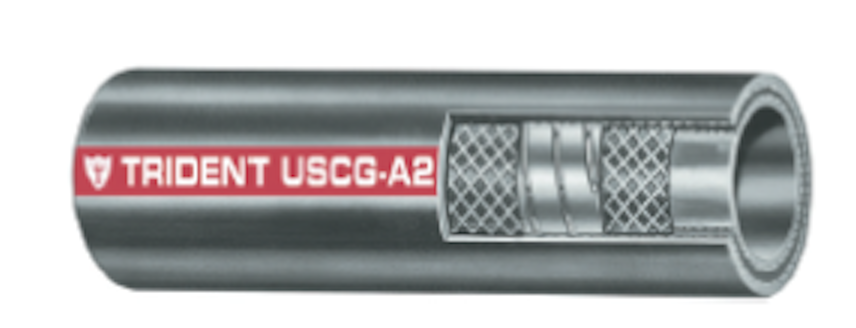
Salt Water Cooling Hoses
From the skin fitting to the suction filter to the pump, a premium grade suction hose should be used. There have been some failures of water pumps in sterndrive-powered boats caused by the use of ear muffs connected to the garden hose when there is insufficient pressure available to feed the demand of an engine being flushed at too high a speed. Flushing with earmuffs is OK in most areas on a city water supply. At cruising speed most modern marine engines would pump at least 12 gallons per minute (45 LPM), far more than you would get out of your city garden hose.
Generally, marine engines are fitted with heavy-duty, wire and fabric reinforced hoses between the raw-water pump and the heat exchanger. But all too often the engine installer will use a light-duty rubber or plastic hose (i.e. automotive heater hose) to connect the raw-water seacock to the pump. Although heater hose is generally designed to tolerate temperatures as high as 105°C and pressures to 400kPa, it is relatively thin-walled and soft. If the inlet becomes blocked, the vacuum pulled by the raw-water pump will collapse a heater-hose, starving the engine of water.
Again, all water hoses, especially those below the waterline, should have double hose clamps.

Exhaust Hoses
Use only approved exhaust hose. Approved means that it meets certain criteria of being able to withstand total loss of cooling water for a period of time. Double clamping using nut and bolt "T" clamp with lock nuts is recommended on all exhaust connections. Regular inspection for tightness is also recommended.
Exhaust hose requires a heavy-duty rubber, wire and fabric-reinforced construction. Hose runs longer than four to six times the inside diameter of the hose or those with relatively tight curves be wire-reinforced. This eliminates kinking at bends and sagging or pulsing from the constant pressure changes that occur in the exhaust.
Care should be taken on wire reinforced hose the wire is tough to cut, often leaving a razor sharp piece of metal sticking out of the end of the hose. And if the hose isn’t a perfect fit on the nipple, the wire may make it difficult to get the hose to seal properly.
If you need long exhaust hose runs you can avoid using hard-wall piping by including lengths of fiberglass marine exhaust tubing.
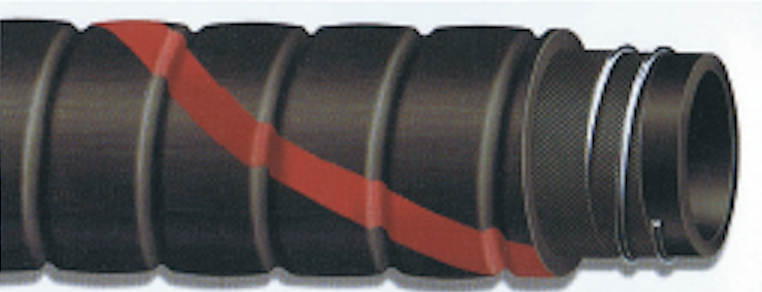
Hydraulic Steering Hose
There are several options for hose or pipe in this application. Hydraulic hose should not expand or contract. This rules out using rubber hydraulic hose because its elasticity can result in a spongy feel in the steering, particularly at high speed.
Satisfactory products are high pressure thermoplastic type hoses or copper tubes.

Hose Quality
How do we identify a quality hose? Look for recognized brands and check that the hose is labeled with its manufacturer’s name and specs. It is also important that the hose has an SAE rating, or U.S. Coast Guard approval and that it meets survey requirements.
Having the right hose for the right job is probably more important than most of us realize. Most hoses look alike, but they can be quite different inside in terms of internal reinforcement and quality of adhesion between different layers of hose.
It is best to buy from a recognized dealer or distributor and to listen to advice.
A quick tip on maintenance. Check clamps frequently and visually inspect hoses often. What could be merely an annoying inconvenience in a car could be a fatal disaster in a boat.